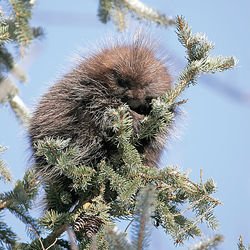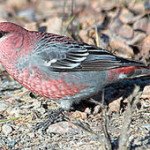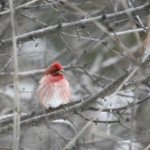By Dana Johnson

The North American porcupine, Erethizon dorsatum, is Minnesota’s second largest rodent surpassed only by the beaver. Like the skunk, this is an animal best given some space if encountered in the wild.
Known best for its built in defense arsenal of black and white banded quills, roughly 30,000 of them, the porcupine has few enemies. While it is a common myth that a porcupine can throw its quills, it does have a strong, five- to seven-inch-long tail that can be whipped quickly at a perceived threat.
The quills are actually modified hairs armed with tiny barbs, whichact like miniature fish hooks. When the quill enters the flesh of a predator, the barbs pull the quill deeper as the muscle contracts. If the unfortunate animal was hit in the face, it will probably starve or die of infection.
The fisher is the most adept porcupine predator, although bobcats and sometimes other predators make kills as well. They first attack the quill-free face with quick movements, staying in front of the animal. Then they flip the creature over to get at its soft underbelly, which is also void of quills.
Defense aside, the porcupine lives a gentle lifestyle. In early spring they are often found in trees, eating and thriving on inner bark and the needles of evergreens. Porcupines have been known to kill trees by stripping off too much bark, but this rarely creates a problem unless the population density of these animals is too high.
Porcupines don’t hibernate, but they do like to overwinter in rocky dens, sometimes shared with other porcupines. In the warmer months they subside on a variety of vegetation including herbs, buds, leaves, nuts, and berries. Salt is an attractant as well. Porcupines have been known to chew boat oars and work gloves seeking salt from the human sweat. Antler sheds from deer and moose are also chewed on by porcupines for the nutrients, such as calcium, they contain.
Male porcupines can reach a maximum weight of 35 pounds and length of 40 inches from nose to the tip of tail. Females are somewhat smaller. Their coloration is yellow-brown to grey-brown as they age. The stark contrast of white in their quills along the back and tail against dark fur serves as a strong warning to predators to keep their distance, especially at night when the animal is foraging.
Porcupines mate in late autumn and give birth to only one offspring in May or June. The elaborate mating ritual is initiated by the female who attracts potential mates by screaming from the safety of a tree. The mating itself takes place on the ground.
The pup is born armed with small, soft quills. Its eyes and ears are open. It is weaned and able to climb trees before two weeks of age. It takes two years for the young to reach sexual maturity. Porcupines are very long-lived for a rodent, possibly reaching upwards of 15 years in the wild.




